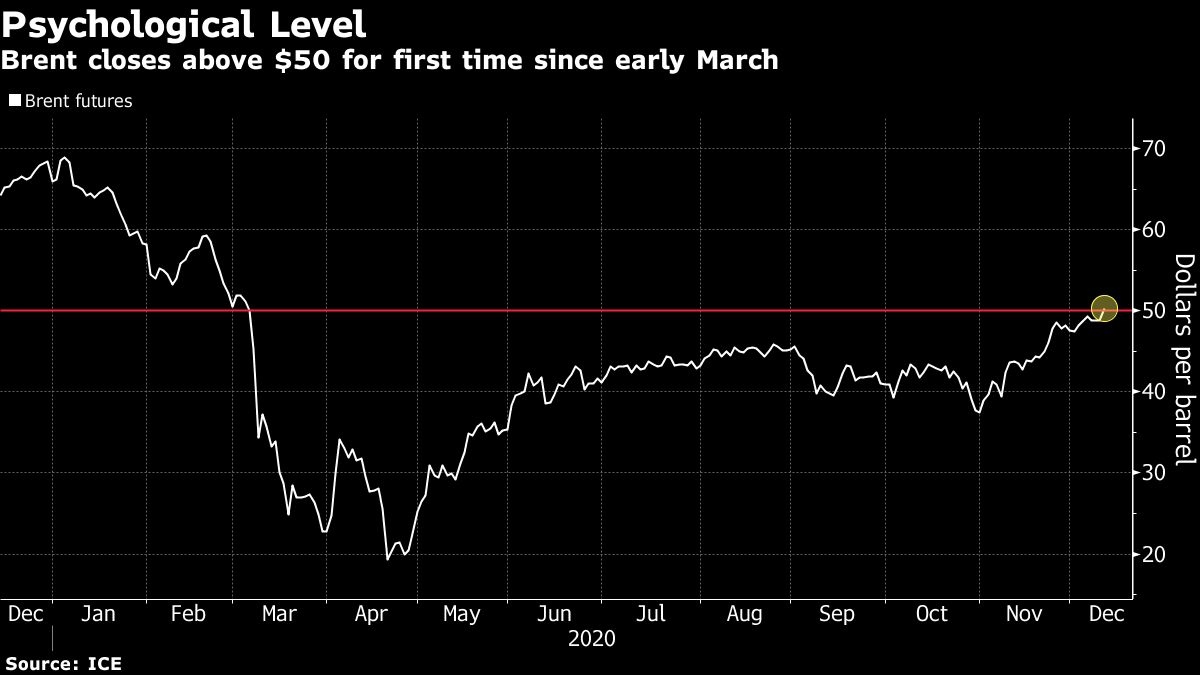Dec 11, 2020
Oil rally momentum slows after previous day's 'feeding frenzy'
, Bloomberg News
Investors are skeptical after a historic build in oil inventories: Stephen Schork
Oil took a breather following a swift run-up to a nine-month high, as concerns over an impasse in Washington about stimulus tempered optimism around an eventual demand recovery.
Futures fluctuated near US$47 a barrel in New York alongside a broader market decline as bipartisan talks on another round of U.S. fiscal stimulus stalled. Meanwhile, following Brent’s rally above US$50 a barrel on Thursday, the benchmark settled technically overbought in a sign it was due for a pullback.
“After the feeding frenzy yesterday, everyone’s just taking a breath,” said Gary Cunningham, a director at Stamford, Connecticut-based Tradition Energy. Meanwhile, “the U.S. stimulus package still has its hurdles to get over,” delaying a possible boost to the demand outlook.

Still, U.S. crude futures are up roughly 30 per cent since the end of October amid signs the market outlook is picking up. Global consumption of gasoline and diesel rose to a two-month high last week, according to an index compiled by Bloomberg, suggesting the impact of recent coronavirus lockdowns is waning. Buying by Chinese and Indian refiners also indicates Asian physical demand will likely remain supported for another month.
“Demand is seeming to pick up around the world, and that’s a good sign,” said Michael Lynch, president of Strategic Energy & Economic Research. “But given the latest uptick in cases, you have to wonder if we’re going to see demand start to back off a little bit.”
Prices
- West Texas Intermediate for January delivery rose 14 cents to US$46.92 a barrel at 10:32 a.m. in New York
- Brent for February settlement gained 4 cents to US$50.29 a barrel
The market has taken OPEC+’s recent decision to restore a small amount of output in January in stride, and the oil futures curve is signaling investors expect further gains in consumption. In the U.S., demand prospects were buoyed as a COVID-19 vaccine won the backing of a government advisory panel, helping to clear the way for authorization by the Food and Drug Administration.
“The very fact that prices broke the US$50 ceiling this week is positive for the market,” said Bjornar Tonhaugen, head of oil markets at Rystad Energy. Nevertheless, “a correction could be across the corner once the consequences of winter’s lockdown are more evident.”
Other oil-market news:
- A key European pipeline resumed operations after being halted for much of the week, according to OMV AG. The Transalpine Pipeline, which supplies Germany with oil, had been disrupted as a result of heavy snow.
- Saudi Aramco gave full contractual supplies of crude to at least six customers in Asia for January sales, according to refinery officials with knowledge of the information.
- The number of supertankers signaling the U.S. as their destination rose in the past week to the highest level since early September, according to ship-tracking data compiled by Bloomberg.




